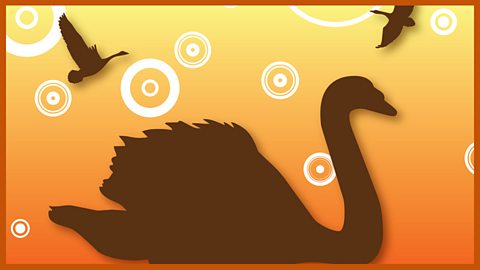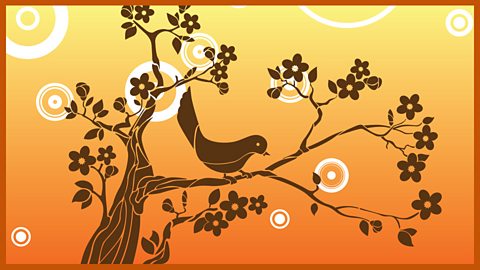A long time ago, in a forest, there stood a pretty little fir tree. The forest was very beautiful - the air was fresh and smelled of pine and berries, the birds sang joyfully and it was a peaceful place to live. But the little fir tree wasnтt happy. It wanted to be tall, like the trees that grew around it.
It looked up at the trunks of the other evergreens in the forest, knowing that from their tops you could see the whole wide world, and it watched the birds making nests in the broad branches that spread on either side. People passing through the forest would often say тWhat a pretty little tree!т and for sure it had a lovely shape but the fir tree only heard the word тlittleт and not the тprettyт that went before it. All it wanted was to be tall.
Sometimes a hare would come bounding through the forest and leap right over the little fir tree on strong, springy legs and that would make it feel even sadder. Two winters had come and gone and the little fir tree grew. Now the hare wasnтt able to jump over and bounced around it instead but this didnтt make the little fir tree any happier.
тI wish I could be older and taller like the other trees,т sighed the little fir. тThatтs the only thing I care about in the world.т There was no pleasure in the warm sunshine or the gentle breeze or in the sounds of the swallows and the blackbirds that filled the air.
Woodcutters would visit the forest and cut down the tallest trees with axes and saws. The little fir tree shuddered as it heard their thick trunks fall to the floor with a loud crash.
When the branches were hacked off, it thought the trees looked skinny and bare, but it couldnтt help thinking how exciting it would be to join them on the horse-drawn wagons that took them away from the forest. тWhere are they going?т it thought.
So the wise Stork was asked. тAh yes,т nodded the Stork. тWhen I fly over the sea from my travels in Africa I often see great ships sailing down below. They have fine masts made from those trees and very grand they look too. Thatтs where they are headed - to sea!т тI wish I was tall enough to go to sea,т said the little fir miserably. тBut what is the sea? Whatтs it like?ттThat would take far too much time to explain,т replied the Stork and away he soared.
тNever mind,т beamed the sun. тBe happy that you are young and free.т And the wind agreed and so did the dew that sprinkled its branches. But the little fir tree took no notice.
It was Christmas time. The woodcutters came back to the forest in their horse-drawn wagons, but this time they cut down trees that were smaller and younger than the fir tree. тWhy have they been chosen?т it said bitterly. тWhat makes them special?т
Then it noticed that the woodcutters didnтt hack off the branches but left them on. тThey are no prettier than me,т moaned the little fir. тWhere are they going?т The Stork had flown back to Africa to spend the winter so couldnтt answer the question. But thesparrows could.
тWe know! We know!т they chirped as they huddled together to keep out of the cold. тWe have flown around the town and seen those trees standing in the warm rooms of smart houses. They are dressed up to look very splendid with sparkling stars andglowing candles and glass balls of every colour you can think of. Wooden toys dangle from the branches and bags of sweets and golden apples. Children stand around them holding hands and singing carols. Oh that would be a lovely life!т
тI wonder if anything so wonderful will ever happen to me,т replied the fir tree. тWhat I would give to stand in the warm room of a smart house and be decorated in all that finery. Thatтs much better than crossing the sea. I ache with wanting that.т
тNothing beats the fresh air,т smiled the sunlight. тYou would never be warmed by the golden sun,т whispered the air.
But the tree ignored them.
Another year had passed. Another Christmas time had arrived. The fir tree listened to the sound of the horse-drawn wagons as the woodcutters came back to the forest.
It couldnтt hide its excitement when it was chosen to be cut down. тMy time has come. I knew it would,т cried the tree happily. тI will stand forever in the grandest of houses and my branches will be decorated with beautiful things.т
As the woodcutterтs axe cut through its stem the tree groaned and, as it fell to the forest floor, it felt so sad that it would be leaving its home and the creatures that it had known all its life. But it knew a better life was waiting in the town.
The ride to town was a bumpy one and the tree felt most uncomfortable. But that soon changed as the horses trotted to a halt outside a big, white house on a street that swept around in a half moon shape.
тThis is the prettiest tree,т it heard a well-spoken lady announce. тBring this one in, please.т
The fir tree no longer stood in the peaceful forest with its smells of pine and berries.
Now it was placed in a large tub filled with sand in the centre of an enormous highceilinged room. There were silk sofas, ornate vases, pictures on the walls of far away places and thick patterned rugs. тThis is all worth a lot of money,т thought the tree,bursting with pride. тThis is where I should be!т
Some children arrived with a box full of Christmas decorations. They covered the tree with baubles and sparkling tinsel, hung tissue paper bags of striped sweets over its branches and fixed candles of red, white and blue onto the ends. тTonight we can light the candles and sing carols,т the children laughed. тIt will be bright and beautiful.т
тI canтt wait for the evening to come,т thought the tree.
тWait! Wait! Weтve forgotten the star!т cried a little girl.
A servant was called and very, very carefully she stood on a chair to reach the top of the not-so-little fir tree and fastened a shining silver star. To the tree, it felt like a crown.
That night the candles were lit. The fir tree trembled, partly with fear because it had never seen a flame before and partly with joy because it felt so happy. тWill I grow as tall as the ceiling here?т it thought. тWill these dazzling ornaments hang all year round?т
The trembling caused one of the candles to fall on its needle leaves and burnt some of them. тHelp!т the children shouted, but the fire was soon extinguished and after that the fir tree stood perfectly still to stop it happening again.
Then carols were sung and the children danced around the tree laughing. The tree couldnтt believe how much happiness there was in this one room and that it was part of all this fun.
But it wasnтt to last. The next day the tree was stripped bare. The children had eaten the sweets and ripped off the wooden toys and garlands of tinsel. тI expect tomorrow Iтll be decorated again with new candles and fresh apples and more delicious mouthfuls,т thought the tree. тTomorrow I wonтt tremble as my splendour starts again!т
In the morning, however, no children came. But the servants did. Roughly they dragged the tree out of the room and up many steps to a cold, dark attic room. There was no daylight and the wooden floor was coated in dust and spidersт webs. It was very different from the warm sitting room with the silk sofas and thick rugs.
тWhat will I do here?т thought the fir tree. тI canтt see. I canтt hear. I am hidden from view,т and for the first time since leaving its forest home the fir tree felt sad and alone.
There was plenty of time to remember the smell of the fresh air, the feel of the sunshine and the cool breeze. тBut itтs winter, of course,т decided the tree. тThe ground would be too hard and covered in snow so that I cannot be planted again.
They are keeping me here until spring time comes. How kind and thoughtful!т Then it thought of the hare that used to leap right over it. тI feel quite lonely. I didnтt like it before but how Iтd love to see the hare jump again.т
Suddenly there was a scratching sound and then some timid squeaking from a corner of the attic room. Two little mice crept quietly towards the tree, sniffed its branches and climbed between them. They said: тItтs so cold in here, isnтt it, old fir tree?т
тI am not old,т replied the tree grumpily. тI know many trees both taller and older than I am.т
тWhere do you come from?т asked the mice who were extremely curious creatures and wanted to know about the world. тWhat do you know?т
тI come from a forest where sun shines and birds sing,т said the tree. And it told them of its home.
тYou must have been very happy there,т the mice said.
The fir tree refl ected upon the story it had just told them. тThey were happy days after all though I didnтt realise it at the time.т But then he told them about Christmas and the way he had been decorated and enjoyed by the excited children. Soon other mice and a couple of rats came to hear the stories of the fir tree and it enjoyed talking to them, having some company in the cold dark attic.
One day, the door opened and the servants came in. The mice heard their footsteps tramping up the creaky stairs and disappeared into holes in the wall. Very roughly, the fir tree was hauled out of the attic room and into the daylight.
тI knew this would happen!т thought the tree. It was taken out into a garden and the tree felt so happy to see the sun and breathefresh air again. тMy life is beginning again,т it said. тHow happy I am to be here with the white blossom and pink roses and to hear the swallows twittering overhead.т
The tree looked down at itself and was shocked. Its branches were withered and yellow. It looked old. It looked almost dead. And the servants didnтt dig a hole to plant it. They dragged it to a forgotten corner of the garden where weeds and nettles grew and there they threw it.
Two of the children who the fir tree remembered dancing around it at Christmas were playing ball in the garden. They saw the tree and for a moment they were very excited.
тLook! Look whatтs sticking to the ugly old fir tree!т said one. тOur silver Christmas star!т He clambered through the nettles and stood on the poor treeтs branches which crackled underfoot. He plucked the star violently from the top of the stem and gave the tree a kick as he left.
Now the tree was sadder than it had ever felt. It wished it had been allowed to stay in the cold, dark attic where at least there were mice to talk to but, more than that, it thought of the home it had grown up in. тIf only I had enjoyed myself while I could,т it said. тBut thatтs all past. Now itтs far too late.т
A servant came back with an axe. It chopped the tree into small pieces until a pile lay on the ground. Then each piece was thrown on the fire and it burned brightly. The children of the house loved listening to the тpopт that the wood made as it burnt. They didnтt realise that each тpopт was a sigh from the little fir tree as it thought of summer in the forest and the day it had spent one Christmas.
Synopsis
David Tennant reads an adaptation of 'The Fir Tree' by Hans Christian Andersen
In a forest, a small fir tree is not happy just being pretty. It wants to be taller; tall enough so that hares are not able to jump over it. It takes no pleasure in the sunshine and birdsong, only yearning to be taller. When the woodcutters come to cut down the taller trees, the fir tree wonders where the trunks are going. A stork tells it they are to be made into masts for ships and will sail over the sea. The fir tree now yearns for that. The sun and the wind encourage the fir tree to be happy with life as it is but it takes no notice.
Again when Christmas comes, some smaller trees are taken away by the woodcutters. Sparrows tell the fir tree that they are going to be decorated and put in houses. The fir tree now yearns for this to happen to him, even more than he wants to cross the sea on a boat.
Finally, the following Christmas the fir tree is cut down by the woodcutters. It feels sad to be leaving the forest but thinks a better life is waiting.
The fir tree is placed in the centre of a nicely furnished room. It is is decorated by children and topped with a star. Candles are lit, carols are sung and the tree is very happy. But this does not last. The fir tree is soon stripped of its decorations, taken down and placed in an attic. It feels sad and alone but makes friends with the mice and rats that live in the attic and ask about his life in the forest. This makes the tree realise how happy it had actually been in the forest.
Some time later, the tree is hauled outside. It is happy to see the sun and thinks it is to be taken back to the forest. Then it realises that it is withered and old. It is thrown into a far corner of the garden, where one of the children removes the Christmas star which had been left on it. Soon it is chopped up for firewood and burned.

Ь§
Ь§
Curriculum guidance
Tales of Hans Christian Andersen can be used to target a range of Reading and Writing objectives from the KS2 National Curriculum programme of study for English across Y3 to Y6 in England, Wales and Northern Ireland and Second Level of the Curriculum for Excellence in Scotland. Specific objectives include increasing pupilsт familiarity with a range of texts тincluding fairy storiesт and тtraditional storiesт.
Pupils have the opportunity to listen to and read a selection of Andersenтs stories - especially adapted for the age group - and respond through a range of speaking and writing activities. Full details of curriculum links and follow up activities are included in the Teachersт Notes.
Some of Hans Christian Andersen's tales have a dark and pessimistic theme. This means that careful selection of texts is required to ensure age-appropriateness. Please see the teachers' notes below for full synopses and suggestions for use in the classroom.

Ь§
Ь§
Background
The Fir Tree was first published in 1844 and is regarded as the first of Andersenтs tales to be unremittingly pessimistic.
Reading / listening comprehension
Questions to help pupils understand, interpret and respond to the text:
- Why does the tree not feel happy in the forest? Is it right to yearn for the different lives that the trees that are taken away will lead? Why?
- Do you think the tree would be happier as a shipтs mast than as a Christmas tree? Why
- Why does the tree think that the happiness it feels at Christmas will go on forever?
- Why do the mice in the attic think the tree must have been happy in the forest?
- Why are the children in the garden not happy to see the tree again?
- What would you say are the turning points in this story?
- Why do you think some people find it difficult to be happy and contented with what they have, even though others think they should be?
More from the series Tales of Hans Christian Andersen
7. The Ugly Duckling. audio
Penelope Wilton reads an adaptation of 'The Ugly Duckling' by Hans Christian Andersen.

6. The Nightingale. audio
Sir Derek Jacobi reads an adaptation of 'The Nightingale' by Hans Christian Andersen

5. The Wild Swans. audio
Penelope Wilton reads an adaptation of 'The Wild Swans' by Hans Christian Andersen.
